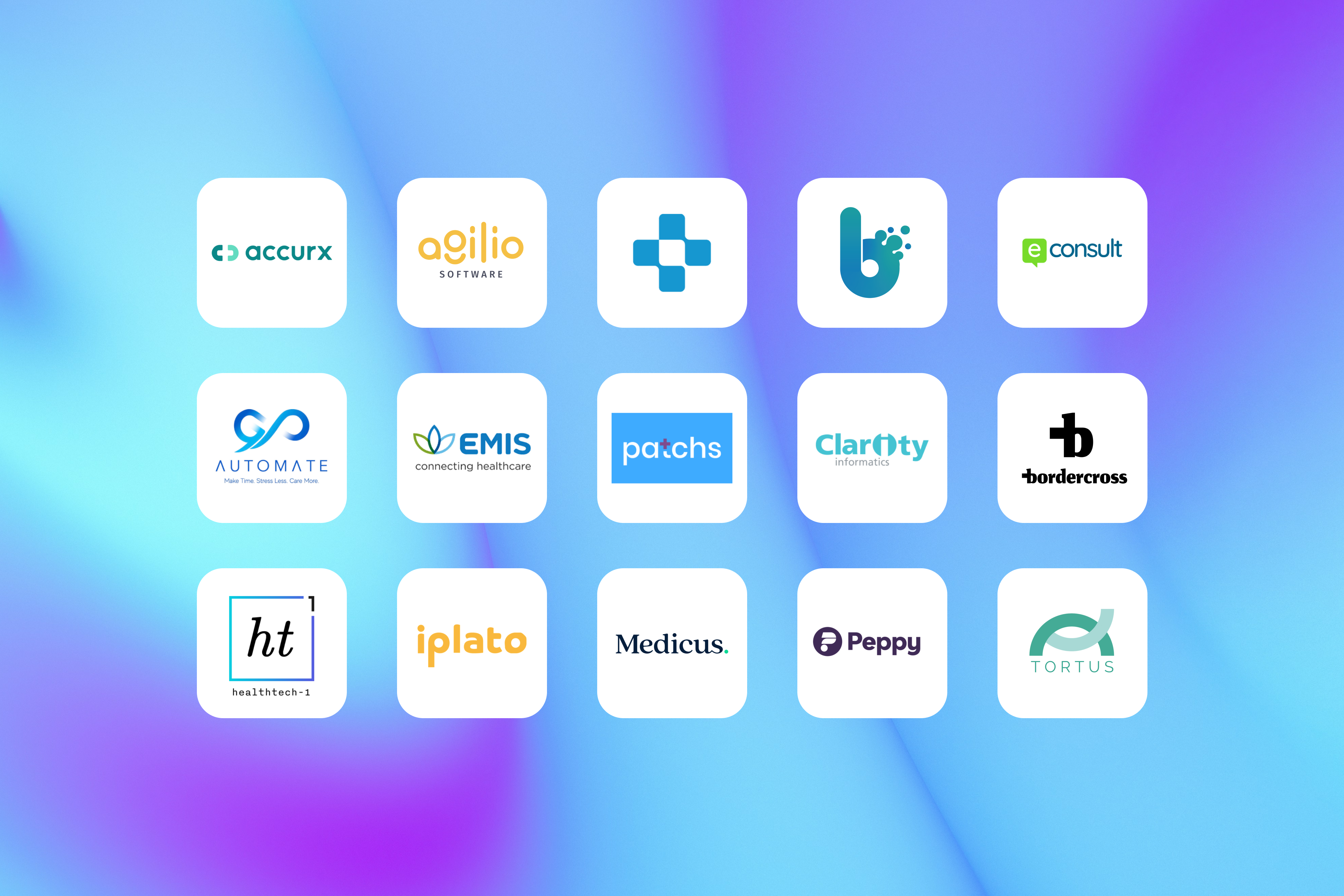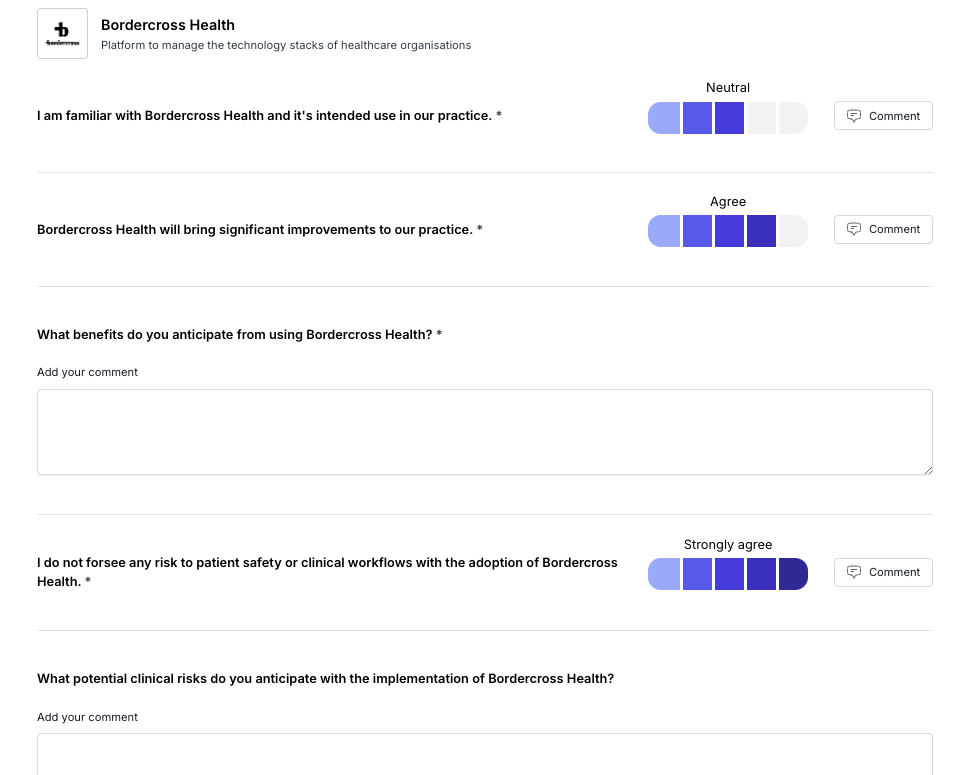Implementing Digital Products with the Bordercross Health Platform
Utilise the Bordercross Health platform to help you stay compliant with DCB0160 and understand your workforce and business processes before, during, and after implementation.

Dr Amar Patel
CEO of Bordercross Health

This guide provides a step-by-step approach to using our workforce engagement tool to implement digital products in your organisation while ensuring compliance with DCB 0160. Following these steps will optimise employee engagement, improve your business processes, and maintain safety and compliance.
Step 1: Identify Relevant Business Processes
Understand which core general practice business processes are relevant to your digital product.
Employee Insights Page:
Begin by selecting the specific business processes your digital product will impact. This will give you a clear focus on which areas need attention during the implementation phase.
Step 2: Send a Baseline Survey to Staff
Gauge your staff's current sentiments about the existing business processes, ensuring a broad understanding of employee perspectives.
Distribute a baseline survey to all staff, ensuring input from different roles and teams. The plaform ensure psychological safety is paramount so that staff feel comfortable providing honest feedback.
You’ll receive auto-analysed results that give you insight into how employees feel about current processes, potential areas of concern, and opportunities for improvement. Results can be exported to PDF, making them easy to present at internal meetings.
Step 3: Review and Analyse Survey Results
Use the auto-analysed results to guide decision-making in your meetings.
Assess the feedback provided by your staff through the survey. Use the tool’s insights to highlight potential challenges and opportunities within your business processes. Export the results in a clear, structured format to discuss with key stakeholders.
Step 4: Send a Pre-Implementation Survey
Before introducing the digital product, gather feedback from the staff who will be affected by it.
Target the staff members who will use or be impacted by the new product. Ensure a wide breadth of input from different roles. The platform will capture risks, suggest mitigations, and generate hazard logs that will help you stay compliant with DCB 0160 requirements.
Step 5: Address Risks and Introduce the Product
Ensure all risks are addressed, and documentation is completed before launching the digital product.
Use the feedback from the pre-implementation survey to populate your hazard logs. After addressing any risks and completing necessary compliance documentation, roll out the new digital tool to your staff.
Step 6: Conduct Post-Implementation Surveys
Continuously monitor the digital product's impact through post-implementation surveys.
Send weekly surveys for up to 4 weeks after implementation, then extend to monthly surveys as the product becomes established. These surveys will ensure you capture any emerging challenges or risks that need addressing.
Step 7: Annotate the Business Process
Track the impact of the digital product on your business processes by documenting the changes.
Use the workforce engagement tool to annotate the business process that the digital product affects. This will enable you to monitor and track the change, ensuring continuous improvement and accountability.
Step 8: Conduct a Follow-Up Survey After 3 Months
Assess how the digital product is performing three months after implementation.
Send another business process survey to staff approximately 3 months post-implementation to evaluate staff perceptions of the product’s integration and its effect on business processes. This will help you to gain valuable insights to ensure the digital product is meeting its intended goals.
Step 9: Implement Periodic Surveys
Ensure long-term success and maximise the usage of the digital product through regular assessments.
Conduct periodic business process and product-related surveys quarterly or semi-annually to proactively identify any issues before they surface. Keep track of the product’s ongoing effectiveness and staff engagement, making adjustments as necessary to optimise outcomes.
Step 10: Share Results and Insights in Meetings
Keep all stakeholders informed of progress and improvements.
Present the insights from the surveys and any annotations or changes made to the business processes during regular team and stakeholder meetings.
Foster a culture of transparency and continuous improvement, ensuring all changes are aligned with both business goals and staff needs.

Find out how Bordercross Health can help with your DCB0160 compliance
